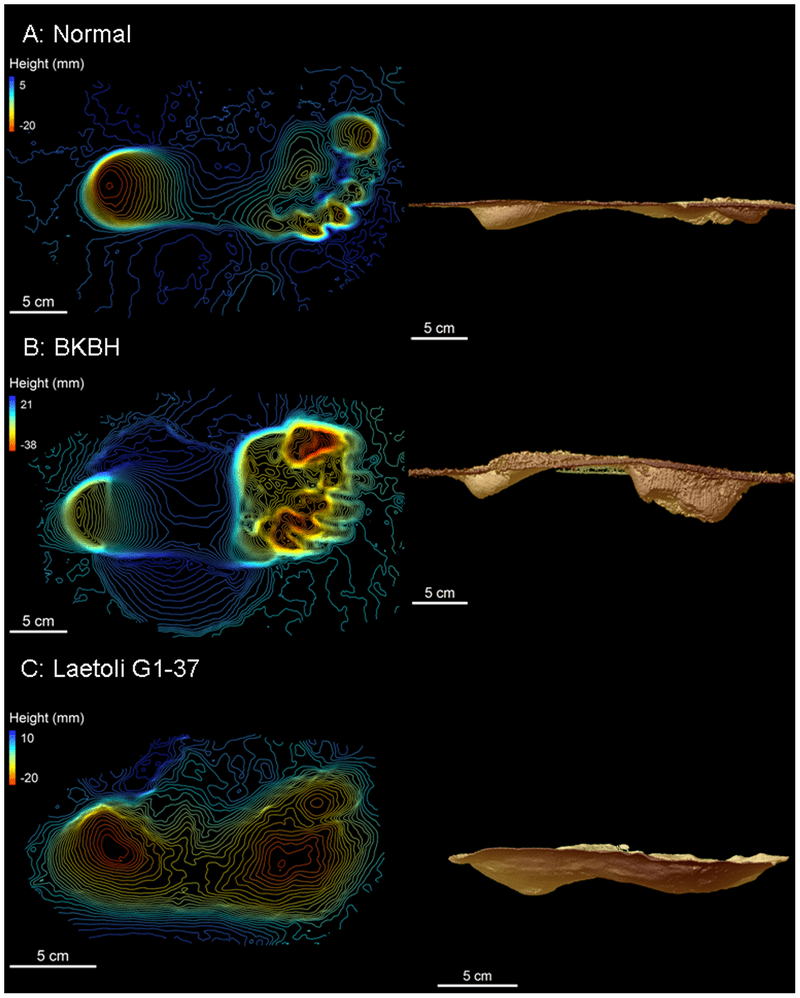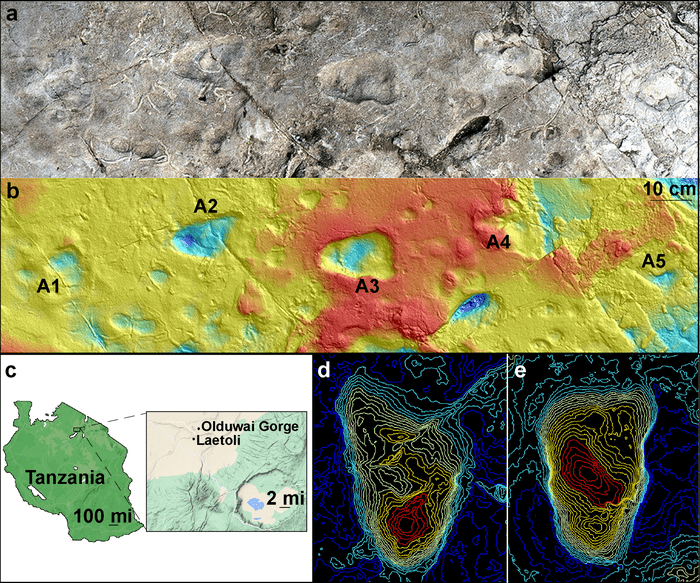In 1970, five consecutive footprints were discovered at a site in Tanzania. The site, called Laetoli, dates to more than 3 million years ago — and “The Laetoli Footprints,” as they became known, were dated to around 3.6 million years ago.
The footprints are notable because they suggest that one hominin species was walking upright, on two legs, 3.6 million years ago. But there were other footprints at the site as well. Because of their similarity to bear prints, these footprints fell into obscurity, but a new study suggests that instead, they belong to another, unidentified species of hominin — and this hominin also walked on two legs.

In 2019, Ellison McNutt and colleagues went to re-excavate this second set of footprints and have a better look at it. They weren’t expecting much; they even feared that erosion or other natural phenomena may have worn the footprints away. As McNutt puts it, they had “meager” hopes of rediscovering the prints. But they got a bit lucky: thanks to careful notes left by Mary Leakey, a paleontologist who had worked at the site, they were able to pinpoint their exact location and start digging — finding the footprints almost in better shape than four decades ago.
“Our field team excavated the area and found that instead of eroding away, four decades of seasonal rains had instead washed sediment over the prints and had beautifully preserved them. We carefully excavated the footprints, revealing more detail than ever before, and we recorded the footprints with high-resolution 3D laser scanners, unavailable to researchers in the 1970s. While we were unable to find more than the original five footprints, we plan to return to the site and search for more footprints of this new hominin,” McNutt told ZME Science.
They compared the newly discovered footprints with those of chimps and bears and found, beyond a doubt, that these footprints belong to a hominin; but which one? They don’t appear to be made by the same one that formed the original set of footprints, nor any other hominin we know. To make matters even more intriguing, this doesn’t seem to be a transitionally bipedal hominin — someone who was just learning to walk on two legs — this hominin had already transitioned to bipedalism.

“We are quite certain that these are hominin prints. The prints are bipedal, with no evidence that this individual was transitioning between quadrupedalism and bipedalism (that is, there are no imprints of forefeet),” the researcher added.
“The prints also have size portions between the big toe and the second digit that are consistent with hominins and their relatives (i.e, relatively large big toes), as opposed to the smaller big toes found in bears. Additionally, these prints display an instance of cross-stepping (i.e., where one foot passes completely across the midline in front of the other foot.) Humans have the ability to cross-step due to the anatomy of our hips and knees, which allows us to retain our balance whereas quadrupedal animals (like bears or chimpanzees) cannot.”
The hominin that left the footprint had an unusual gait, walking in cross-stepping way, with each foot crossing over the body’s midline to touch down in front of the other foot. But other than this, we don’t really know all that much about who made the footprint, McNutt explained. It’s likely that the individual was a juvenile, and it was a different species than Australopithecus afarensis (described from the famous “Lucy” skeleton) that left the other footprints.
This suggests that there was a much greater diversity of hominins than we’re currently aware of and there may be several species still waiting to be discovered — the site of Laetoli could be instrumental in helping us understand this diversity. The fact that not one, but at least two hominin species were bipedal at the time is striking, McNutt concludes.
“The bipedal trackways found there represent the oldest unequivocal evidence of bipedal locomotion in the human fossil record, a way of moving through the world that is one of the fundamentals of the human species.”
The study describing the footprints has been published in Nature.






